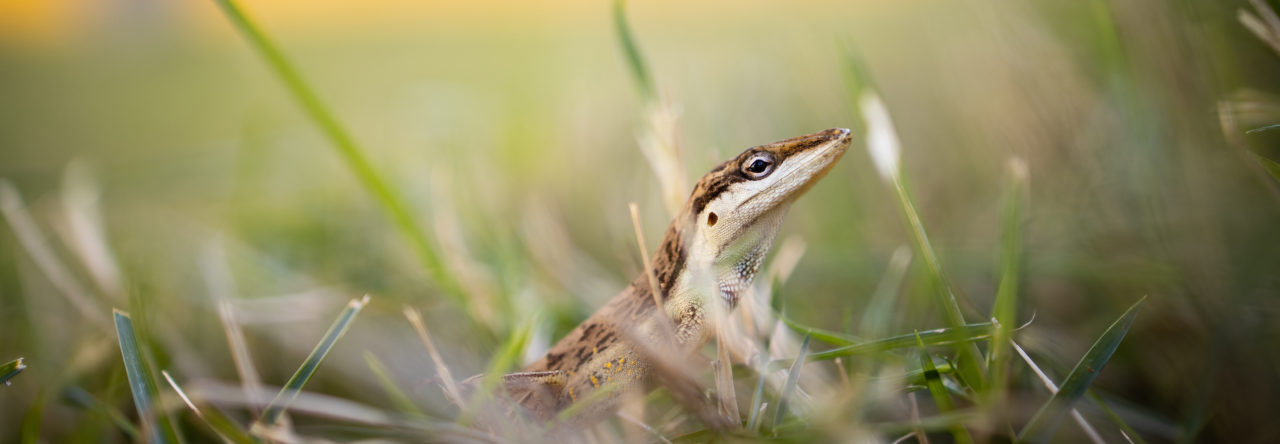*This post was written by Brittney Ivanov, a research technician in Michele Johnson’s lab at Trinity University.*
Urbanization is a phenomenon that comes with human population growth and development worldwide. For humans, urbanization can be positive, providing jobs, housing, and consequentially more growth. However, urbanization can have drastic, negative effects on local animal species, forcing them to respond to a rapidly changing environment. Zac Chejanovski, a Ph.D. student in Jason Kolbe’s lab at the University of Rhode Island, studied this phenomenon in the foraging behavior in one anole species: the invasive brown anole, Anolis sagrei.
Anolis sagrei are found across a range of habitats with varying degrees of urbanization. Zac predicted that an anole’s perceived risk during foraging is related to the degree of urbanization in its habitat. To test this, he set up plates of mealworms near wild A. sagrei and determined their latency to feed. He found that those lizards living in the most natural forested habitat had the shortest latency to feed, whereas those from suburban and urban habitats were much slower to take advantage of foraging opportunities. These results provide support for the idea that an anole’s perceived risk during foraging is related to habitat urbanization.
Taking this a step further, Zac decided to consider the effects of a known anole predator, Leiocephalus carinatus (curly tail lizards), which inhabits some urban environments, on foraging behavior. He wanted to know if A. sagrei foraging behaviors differed between urban habitats with curly tails and those without. To test this prediction, in both habitats Zac determined the amount of time that A. sagrei naturally spent on the ground (i.e., ground use), their latency to feed, and their ground use when presented with a mealworm. He found that in urban habitats where curly tails are present, A. sagrei’s ground use increased when curly tail activity decreased. In addition, during the times when curly tails are least active, Zac found no differences in latency to feed or ground use between A. sagrei from urban habitats with and without curly tails. Together, these results suggest that A. sagrei are adjusting their foraging behaviors in response to not only urbanization, but predation risk as well.














